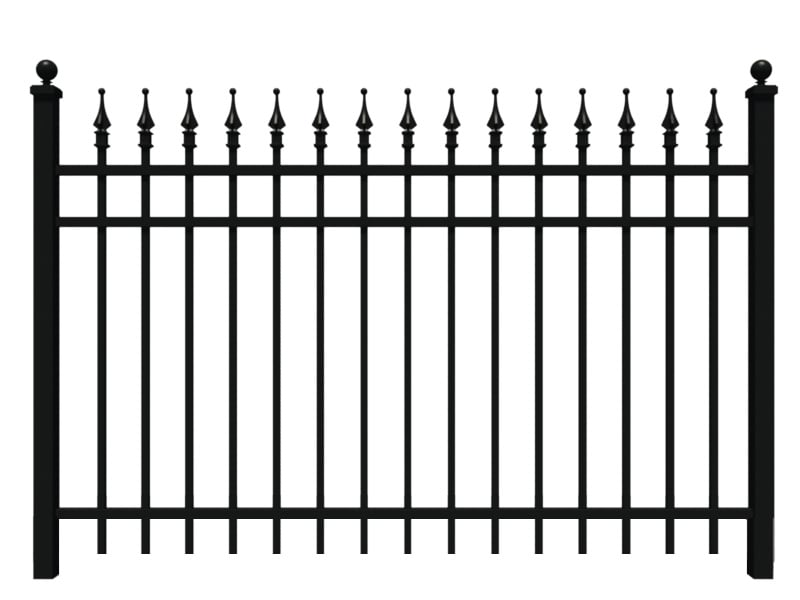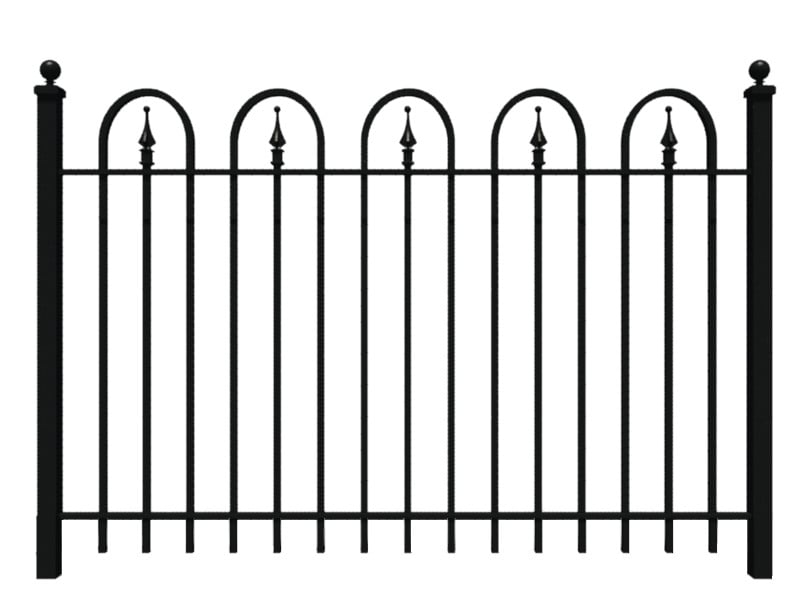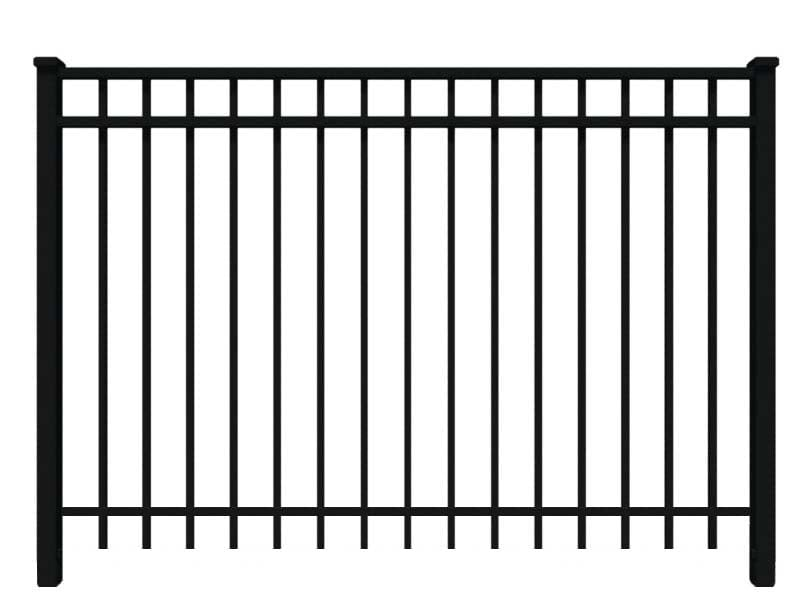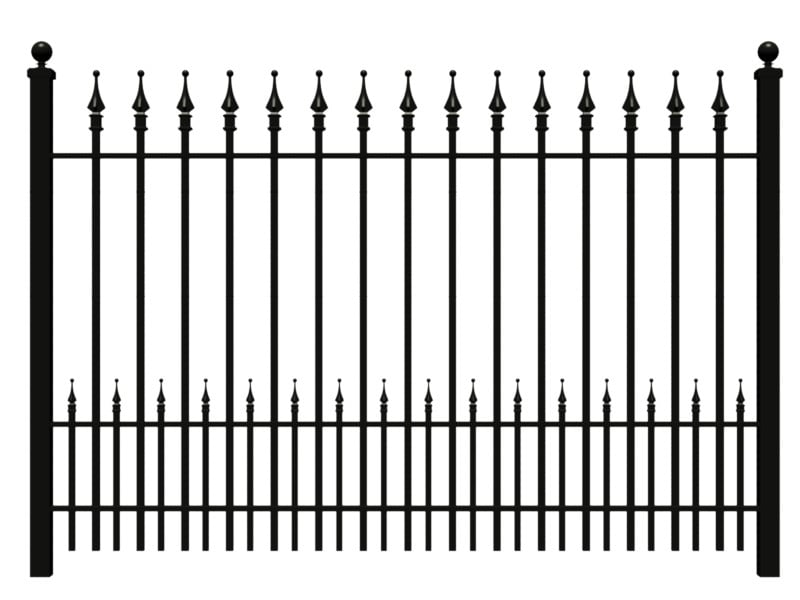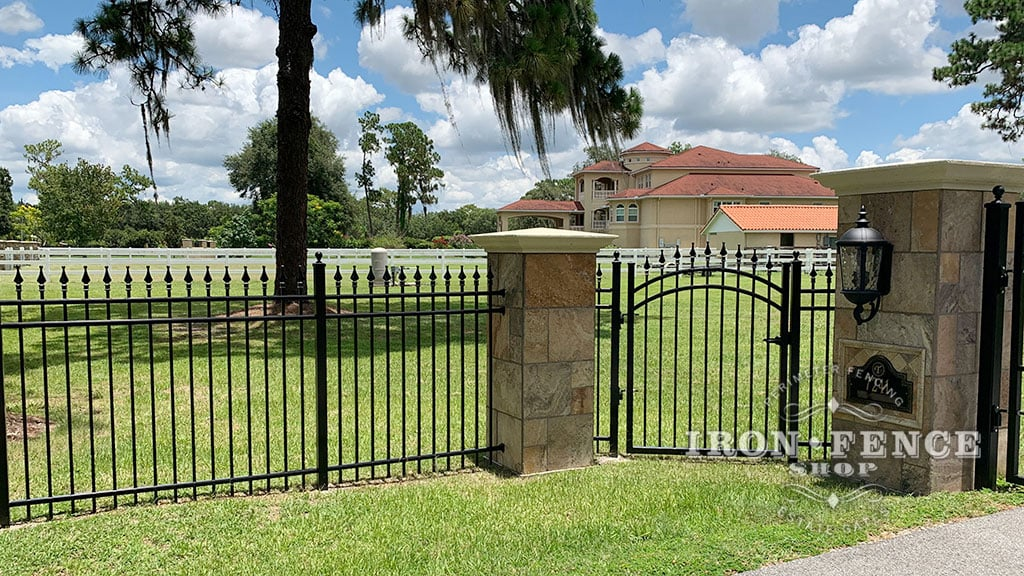
When choosing the right fencing for your property, the decision often boils down to three popular materials: aluminum, wrought iron, and steel. Each offers unique benefits and characteristics that can enhance the aesthetics and value of your home.
In this guide, we explore how aluminum fence panels compare with their iron/steel counterparts so you can confidently choose the materials that best suit your space and lifestyle.
Which Holds Up Best Against Rust and Corrosion?
One of the most important factors in fence performance is how it resists rust, especially in humid, rainy, or coastal environments.
Aluminum
Aluminum naturally resists rust and corrosion because it forms a protective oxide layer when exposed to air.
That means:
- No rust treatments are needed
- Protective coating adds even more durability
- It’s an ideal choice for damp or coastal climates
- Requires minimal ongoing care
These properties make aluminum panels ideal for low-maintenance, long-lasting fencing in wet or coastal environments.
Wrought Iron and Steel
Today, “wrought iron” and “ornamental steel” are often used interchangeably in fences. Most modern iron fences are made from heavy-gauge steel with decorative finishes replicating wrought iron fencing’s traditional look.
Steel fencing remains a robust material and can be protected through:
- Powder coating or galvanization
- Hot-dip galvanizing (for enhanced rust protection)
- Routine care to maintain coatings and prevent rust at wear points
Steel and iron fences can last for decades when properly maintained, and offer unmatched visual appeal and strength, especially for decorative and high-visibility areas.
|
Zoning Check: Before installing any fence, check with your local municipality or HOA. Restrictions may apply to height, materials, or styles allowed in your area. |
How Much Maintenance Does Each Require?
Understanding the upkeep of these fencing options helps determine long-term costs, commitment, and peace of mind.
Aluminum
Aluminum fencing offers a durable, long-lasting solution with minimal upkeep.
- Easy cleaning: Occasional cleaning with water and mild detergent is typically enough to preserve their appearance. This can be done using a garden hose or a soft cloth.
- Basic inspections: It’s a good idea to check periodically for any signs of damage or loose components.
While it requires simple and minimal maintenance, regular care can help keep the fence looking its best and functioning properly for years.
Wrought Iron and Steel
Both materials offer comparable durability and style, but with it comes the need for regular maintenance, especially in humid or coastal environments where moisture exposure is more frequent.
Iron and steel fencing can be a beautiful and lasting investment with proper care.
- Rust prevention: Both materials are prone to corrosion if unprotected. Applying rust-inhibiting paint or sealants is essential. Many fence models today are hot-dip galvanized or powder-coated for improved rust resistance.
- Repainting: Fences should be touched up as needed after scratches, to maintain their aesthetic and structural protection.
- Cleaning: Wash with mild soap and water as needed to remove corrosive substances such as bird droppings and dog urine.
With routine maintenance and care, wrought iron and steel fences can last for decades and offer a bold, elegant architectural statement that enhances any property.
Understanding the maintenance needs of each fencing material can help guide your decision. Whether you prioritize ease of care, aesthetic appeal, or long-term resilience, knowing what each material requires ensures confidence in your final choice.
|
Soil Conditions: Soil type affects fence stability. Softer or sandy soils may require deeper post settings or additional reinforcement, regardless of material. |
Can Aluminum Look Like Iron?
Thanks to modern manufacturing methods, aluminum fence panels can beautifully mimic the style and detail of traditional iron or steel fencing.
Considerations:
- Decorative finials, gothic pickets, curved arches, and other ornamental elements
- Signature powder-coated finishes like matte black replicate the look of classic metal
- Aluminum’s strength-to-weight ratio allows for flexible design while keeping structural integrity
This makes aluminum the perfect choice for the elegance of traditional metal fences with the low-maintenance benefits of modern materials.
What Are the Installation Considerations?
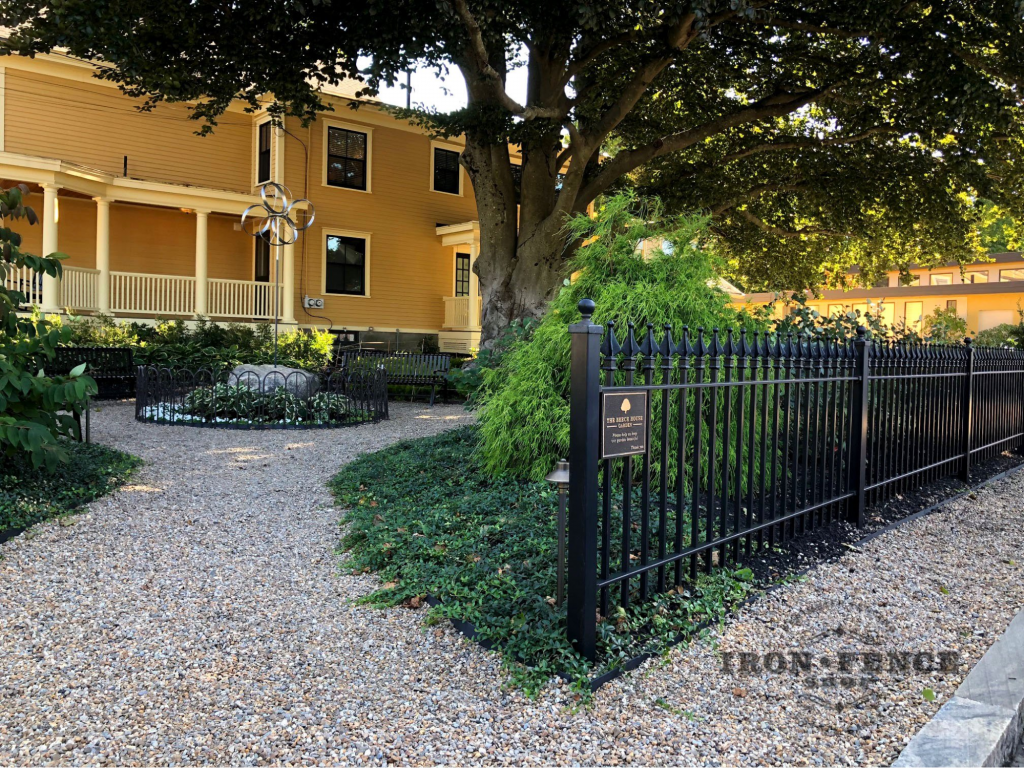
Installation can dramatically impact overall project cost and timeline. Each material presents unique challenges and advantages during installation.
Aluminum
- Lightweight and easy to maneuver
- Usually shipped as pre-assembled panels
- Designed with integrated posts and rail inserts
- Easy to install = lower labor costs
- Ideal for DIY or contractor installs on most terrain types
Wrought Iron and Steel
- Heavier and more labor-intensive
- Often customized/welded to fit specific layouts
- Easy to install
- Results in a high-end, deeply rooted installation that’s built to last
Which Material Is More Eco-Friendly?
When evaluating fencing materials from an environmental perspective, looking beyond their manufacturing process is essential. Factors such as recyclability, energy consumption, transportation impact, and lifespan all contribute to the overall sustainability of aluminum, wrought iron, and steel.
Aluminum
Aluminum is one of the most sustainable fencing materials, thanks to its high recyclability and low energy requirements during recycling. Recycling aluminum uses roughly 5% of the energy needed to produce it from raw materials. Its lightweight nature also reduces fuel consumption during transport.
Wrought Iron and Steel
Wrought iron is less commonly recycled but can still be repurposed or reused. Steel is a highly recyclable material and is widely reused in modern manufacturing.
With long-term sustainability, all three materials offer eco-friendly advantages when used thoughtfully. Aluminum’s recyclability and low energy consumption make it strong over time.
Choosing the Right Fencing Material
Deciding between aluminum and iron/steel is usually about matching the fence to your priorities:
Choose aluminum if you want:
- Low long-term maintenance
- Rust resistance—even in coastal climates
- Lighter handling and faster installation
- Classic styles with modern performance
Choose iron/steel if you value:
- Traditional, heavyweight aesthetics
- Strength and structure for ambitious designs
- Customization via welding or fabrication
- A premium product that commands visual attention
And remember, these materials can be used together. Many homeowners use aluminum fencing in less visible areas and reserve iron/steel for front entries, staircases, or statement locations.
Build the Right Fence for Your Home
Choosing between aluminum, wrought iron, and steel fence panels means looking beyond aesthetics. This article has shown how each material differs in key areas like rust resistance, maintenance needs, ease of installation, and environmental impact.
Whether you’re leaning toward aluminum for its low-maintenance dependability, or toward the timeless detail of iron and steel, we’ll help you create something built to last—and designed to impress.
Contact the experts at Iron Fence Shop today for a personalized quote, detailed product specs, or design guidance.
Let us help you bring long-lasting beauty, strength, and style to your outdoor space. Your ideal fence is just one conversation away!
 Free Shipping over $5,000
Free Shipping over $5,000
 15 Years in Business
15 Years in Business
 18mo No Interest Financing
18mo No Interest Financing
